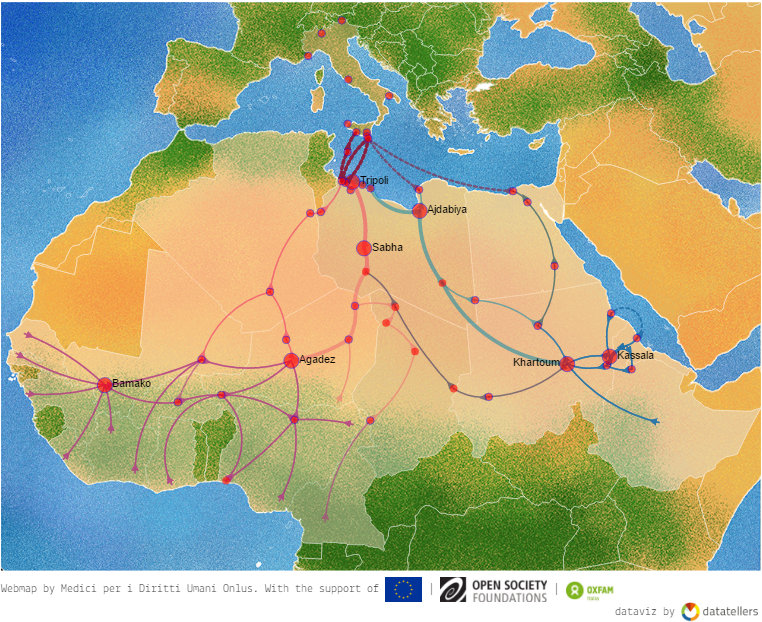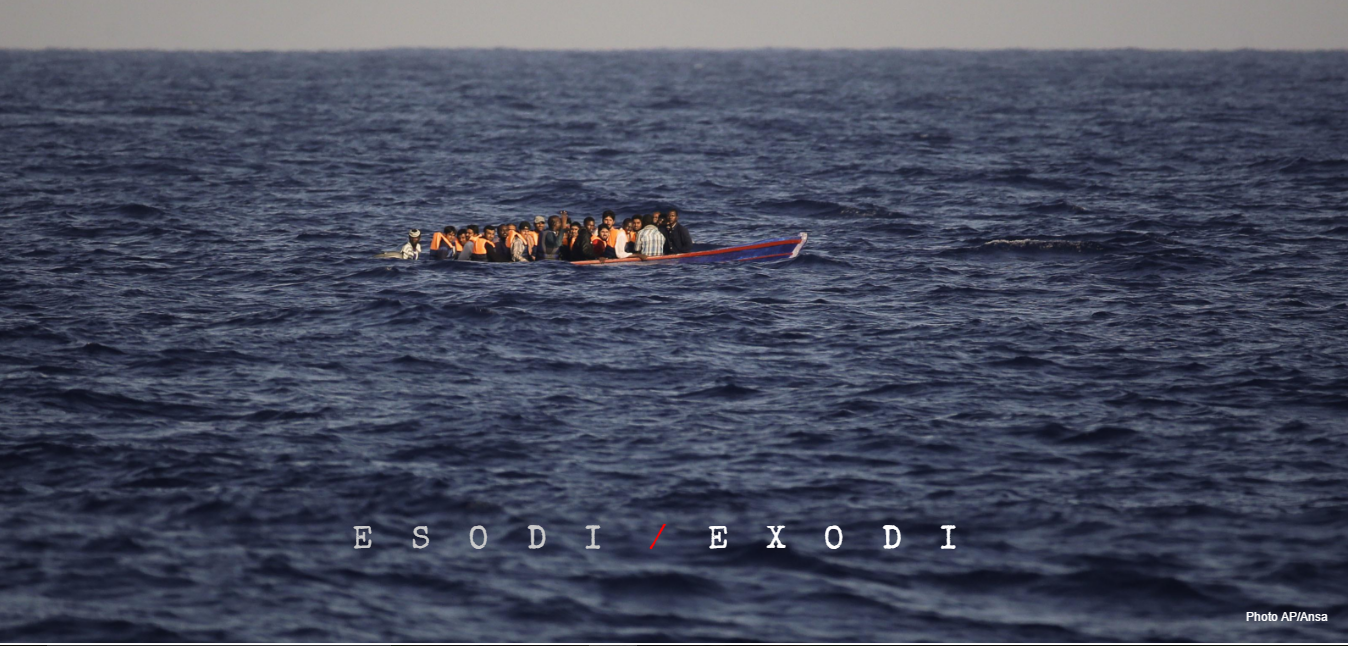First interactive map in the world about the migration in the Sub-Saharan countries was lauched last Sunday, 28, by the italian NGO Medici Per Diritto Umani
By Victória Brotto
From Calabria (Italy)
Portuguese version – click here
A 26 year old youngster flees from his little town in the countryside of Eritrea. Afraid of engaging in the National Service, he decides to go to the port in Mersa Gulbud, in the coast, take a boat to Suakin city, in Sudan. He has chosen the sea rote because by land it will be too dangerous – he could be captured by the militia, sold as slave or expatriated by the Sudanese authorities.
From Sudan, the youngster will try to reach Egypt and, from there, cross the Mediterranean Sea by boat to Pozzallo, in Italy. At the end, if he manage to survive along these 20 month migration throughout North Africa, does not be expatriated and if he has more than 2,000 euros to pay the smugglers along the journey, maybe he will arrive in Italy. But if he seats in the wrong side of the boat during the journey in the Mediterranean Sea, or if the smugglers haven’t had checked the weather – what normally they don’t do – and the boat sink, the chances to get in Italy will sharply fall.
This migrant represents one third of the population – or 400 people every month – that flee from Eritrea because of political persecution, rape or forced labour, according to the UN Agency for Refugees (UNHCR). The Eritrean migrants, after Syrian and Afghan people, represent the majority of those 790, 000 migrants that have already crossed the Mediterranean Sea over the last 15 years from many different routes inside of Africa. These routes have never been drawn until last Sunday, 28, when a thousand of migrants decided to tell the story of their trips to the Italian NGO Doctors for Human Rights (MEDU, in Italian initials).
The map is available online in English and Italian languages. To get in, click here.
The NGO built an interactive map upon the testimonies of 1,000 migrants from sub-Saharan Africa. They were collected in three years of activity (2014-2017)by the MEDU’S staff in Scily, Rome, Ventimiglia and Egypt. The map, the first of the world told by migrants from the North of Africa, carries the name “Esodi”, in Italian, quoting the book of the Bible “Exodus” that tells the story of the Hebrew people migrating toward the promised land after had been fled from Egypt, where they were slaves. “During your journey, you are no longer considered as a human being”, said one migrant to the NGO.

Credit: Esodi
According to the project creators, the map was created to those who want to deepen thei understanding on the issue. “This map is addressed to all those who want to understand and deepen the human experience marking our time”, said the NGO.
The map
The map details the way made by the migrants from the North of Africa up to Italy. With the testimonies of 870 men and 130 women in an average age of 26 years, eight routes are drawn for people to know “the difficulties, the violence, the tragedy and hopes encountered during the trip by the protagonists”, they say.
The routes go from the Western to the Horn of Africa and all of them reach the top of Africa bounding to the sea side. Several red arrows link the main city-points in different countries. This city-points are showed in red spots and if you pass the mouse on, the name of the city will show up and also what that city is, if it is a “transfer site”, a “boarding point”, a prison or a refugee camp area. In each of this red spots, the reader can check testimonies, figures, statistics, how much a migrant has to pay to travel from there to the next city closer to the sea.
One of these read spots is Khartoum, capital of Sudan. It is the main “transfer city” to migrants from Horn of Africa bound to Europe. Thousands of people pass by it, as the eritrean youngsters described in the beginning of this report. They will have to pay between 600 and 1000 dollars for a trip to Libya – and there, to Italy.
“I crossed the border between Eritrea and Sudan through the bush”, said the migrant B.O from Eritrea, 40 years of age. His money was not sufficient enough to make the trip to Libya, but he arranged with the smugglers that if they crossed he in, he would work for free to pay the debt.
I was detained in Ishlavia for 2 months I was detained in a small house and given few pineapple and rice to eat a day. They asked me 1000 dollars to be released but since I did not have that money, they forced me to cement work in the desert. I felt sick but they beat me on my head”, he tells. “Only later I heard other people speaking about Italy, so I collected 300 Libyans Dinars from my friend and I gave to the Libyan who was managing that detention point. They came one night, took 90 of us and we travelled for 12 hours up to Tripoli. There, I stayed 6 days in a big hall with other 400 persons, with no water and bread. On the 7th day, Libyans came and forced all of us to enter into a boat which was already in the water.”
Stories as B.O’s are the focus of the map, said the Italian NGO. “EXODI is not only a map showing the stages and paths, as well as a report with data and statistics, but above all, a testimony that describes life stories”, the creators of the project say in the introductory part of the map.
“Through updated data EXODI aims also to describe the physical and mental consequences of the journey on the health of an entire generation of young Africans”, they add after had guaranteed that all the migrants heard during the project are well-supported, socially, medically and psychologically, by them. In the map, the visitor can also know how many people are mentally ill because of the journey they have done and what kind of disturbs they are suffering from.



[…] Por Victória Brotto Da Calábria (na Itália) English version – click here […]